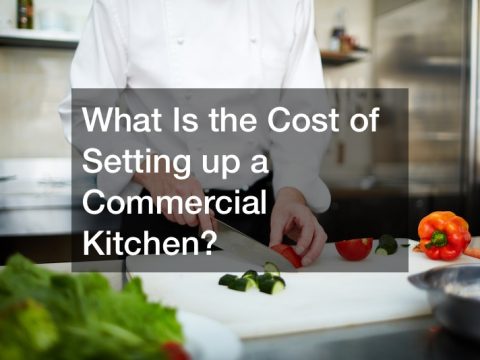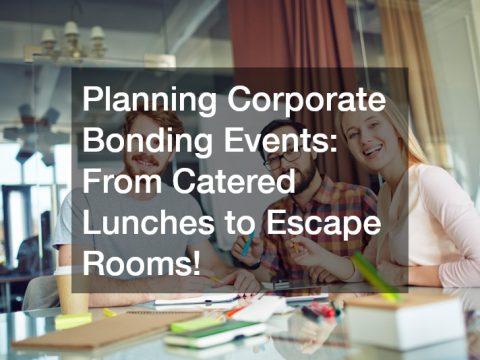Disclaimer: Healthy Lunches. This site provides food and drink content for informational purposes only.
The cost of setting up a commercial kitchen bears many factors in mind, and it’s not always as simple as it seems. Hiring the right professionals and considering what is most important will go a long way in getting the job done properly. Considering all aspects is critical, from local restrictions and rules to expenses and budget.
Commercial kitchens are essential in all industries dealing with food and serving customers. It is a fast-paced environment often referred to as hazardous because of wet or greasy floors. Commercial kitchens are part of restaurants; they are found in food trucks. They are often equipped with all the tools needed to make food, such as stoves, extractor fans, power plugs, worktops, and storage space. They are also sometimes called shared kitchens or culinary kitchens.
When considering the cost of setting up a commercial kitchen, you must consider various factors. Your type of commercial kitchen may depend on the type of food place you’re running, which may influence how big or small your commercial industry can be. Certainly, size plays a role in the cost and the materials used, which are all similar throughout commercial kitchens. Envisage stainless steel countertops and surfaces, and the choice of this material makes it far easier to clean and keep sterile.
Measure Your Space

The size measurements of your kitchen space are very important to know beforehand. This information will help builders and clients save by not having to redo the space due to incorrect measurements. Or buy additional materials to mask bad work resulting from poor sizing, let alone redo the entire kitchen space to fix or make corrections. It’s here where measurement services can be of great help. Measure service will help monitor how much product is required for a specific task to be completed, and this helps service contractors to charge their clients accordingly. At the same time, measured service can help customers only pay for what the contractor uses in the material. This is a win-win for all parties.
Be Aware of Food Allergies
The cost of setting up commercial kitchen factors many things, including allergy testing, legislation, and laws within an area. Food allergies are a very dangerous aspect of the food industry because any consumer is vulnerable if the food contains certain ingredients that are allergens. Allergens may include but are not limited to peanuts, nuts, treat nuts, gluten, wheat, dairy, eggs, shellfish, and soybeans.
Commercial kitchens should always state what is contained inside their foods. A list of ingredients helps prepare people, giving them a heads-up of what they’re eating or about to eat. Knowing what’s inside your food can prevent serious food allergy concerns. There were previous reports that people received food containing nuts from a food truck fast food stand, and this led to serious consequences since the server assured the customer there were no nuts present. After investigations, it was found that nut oil was used to fry the food.
If you own a commercial kitchen, you can do the following:
- Have a clear food allergy warning with the dish containing the allergy ingredient.
- Staff should receive special training regarding food allergies.
- Use specific areas and equipment for certain foods. For instance, food made with nuts should be made and handled with designated equipment.
- Front-of-house communication is a plus when dealing with your customers in a restaurant.
Allergy testing may include a patch containing the allergen substance, which is placed on a section of skin for two days. After that, a blood test will determine if this food is negatively affecting the consumer. When testing for allergies under the skin, requires the doctor to place the said allergy-inducing substance under the skin, and after 15 minutes, it may project allergic symptoms like redness and swelling
When using the elimination test, the person will eliminate all foods suspected to make them have bad reactions. Blood tests will show a peak in antibodies during exposure to the allergen-prone ingredients. Naturally, you’ll be able to add what works for you and what doesn’t and eliminate it completely.
Take Care of Damage

The cost of setting up a commercial kitchen isn’t without the risks of damage. Every business venture needs to take heed to safeguard the business against damage, regardless of size. The damages for commercial kitchens can be great and rake up a large bill. For instance, fire breaking out if the stove or cooktop may not be insured and this can lead to terrible loss of assets and revenue.
Commercial kitchens are also often built with infrastructure and systems in place to prevent gas or oil fires. Water damage to your kitchen can also be expensive to restore and can cost a fortune to replace items. The plumbing must be dealt with as soon as there is an issue, and the same applies to the maintenance of ovens and gas cooker tops.
If you haven’t called in the professionals to help mitigate the issue, try turning off the source of water and while working to slow the damage, use protective gear. There is only so much you can do on your own to fix flood damage in your commercial kitchen, and seeking the help from professional water damage restoration service companies is inevitable, especially when the flooding is bad. The premise will also be inspected to check for further possible water flooding and prevent further floods.
Consult With a Designer
A designer can help you design the ideal commercial kitchen suited to your cooking and service needs. You may need counters to be a certain height, your kitchen architect can assist with this and anything else required to make the kitchen best suited to your needs. Commercial interior designers work loosely with their clients to ensure that they are bringing out the exact factors required to make the project a success. Another concept that always follows the designer’s process is functionality and form so that the users get the best from the kitchen and be able to work there with ease.
Commercial interior designers setting up your kitchen will also consider factors like ventilation as this is crucial if you want ease of airflow and to ensure that no coking smog is getting trapped inside the space. Other factors are easy-to-clean work and cooking tops, prep stations, refrigeration, safety equipment like fire extinguishers, sinks, and wash stations as well as pots and other cooking equipment. All these are at the top of the list when a designer tackles the ideal design for your commercial kitchen.
Replace the Floor
The cost of setting up a commercial kitchen takes plenty of thought into the flooring ensuring safety, cleanliness, and ease of use. It’s clear that the floors are an important aspect of commercial kitchens probably as important as plumbing and safety overall. The type of flooring should be able to withstand heavy foot traffic and be highly durable. It should have antimicrobial properties and be easy to clean. Overall, the floor should also be adaptable to the ever-changing temperatures in the busy and bustling kitchen.
You can source from a variety of reputable flooring company options located in your local area. They can advise you what materials are best to use, and provide a quotation for the work to do. Many companies providing flooring services also give their customers aesthetic options, textures, and color choices to select from.
Install Fire Safety Equipment

Kitchens are hazardous areas for fires especially because of the heat and combustion taking place. It is all about consistent cooking in commercial kitchens. There’s even a saying “If you can’t stand the heat, then get out of the kitchen…” While this saying is meant for the stress that comes with working in a commercial kitchen, it is also generally broad knowledge one of the hottest places in a commercial setting.
Safety systems and preventative measures are always highly crucial to safeguard the staff working in the kitchen and the customers dining on the premises. While kitchen suppression systems are used in commercial kitchens, being safe and prepared for fires is still important. Fire alarm systems are installed when fires trigger, kitchens also add smoke detectors and fire extinguishers to help in an emergency fire. Sprinkler systems are another important facet of fire safety equipment installed in a commercial kitchen. All the safety items will add to the cost of setting up a commercial kitchen in your local area.
Install New Features
If you’ve already got a commercial kitchen and your business is already going strong, you can always consider upgrades to help things along even more. You may look to install new cooker systems, aesthetic features, lighting, and backsplashes. Perhaps the works stations, prep, and counters are outdated and could use a refreshing tweak, then now’s the time to go ahead. Your upgrades with kitchen renovations might not only be for implementing new safety but could be purely for increasing ease of work and aesthetics. Either way, you can talk to a professional kitchen designer in your area to help you get everything sorted. Don’t forget to shop around for quotations and do a bit of historic digging into the potential contractor’s portfolio and previous work. Remodeling a commercial kitchen can cost between $ 2,000 and $50,000, but it really depends on the size and items used or the work done. Not every one kitchen is the same, so working closely with your designer and contractors can help you get a better idea of what you’ll be paying at the end of it all.
Consider Your Menu
Food is the whole point of having a commercial kitchen and not only that, but it’s also food that brings people together. Having a great menu can help increase revenue through sales and will set you up for consistent and loyal customers. When something is good, there is no doubt that people will recommend the food or the service to their friends and family.
Whether you have a restaurant bar, food truck, or coffee shop, the menu is important. Spend some time on what you’re going to make. Also, consider the prices or costs of ingredients and the time taken to prepare the meals. This will give you an idea of how long meal prep will take. As mentioned before, do take the time to tag meals that contain possible allergy-prone ingredients even when it doesn’t seem likely, it’s better for the customer to make the final decision and be aware of what is in the meal. If your facility can manage to store and prep for it, then adding the likes of acai bowl restaurant facets to your menu can work. Many people enjoy the fresh fruit blend that goes with this meal
Update Your Plumbing

Plumbing is essential for any establishment even a simple office may do even better with plumbing such as a sink for coffee prep. The cost of setting up a commercial kitchen includes plumbing services like wash sinks, drainage on the floor, water access, and heating systems for the water.
Plumbers tackling the commercial kitchen industry are also aware of the safety and protocols in place such as rules pertaining to oils and drainage, venting systems, sanitary drainage, and more. Cooking by-products are also required to be disposed of in the correct manner to avoid drain blockages in the kitchen. The cost of setting up a commercial kitchen weighs in heavily on safety as well as the plumbing and the critical aspects surrounding it.
Conclusion
The cost of setting up a commercial kitchen can be a lot and it is also affected by many aspects of safety for staff and customers. With the right help and the capital to back your vision and goal, you’ll be able to open a successful commercial restaurant and continue enjoying what you love most. Create beautiful and innovative meals and satisfy tastebuds throughout your local area.


